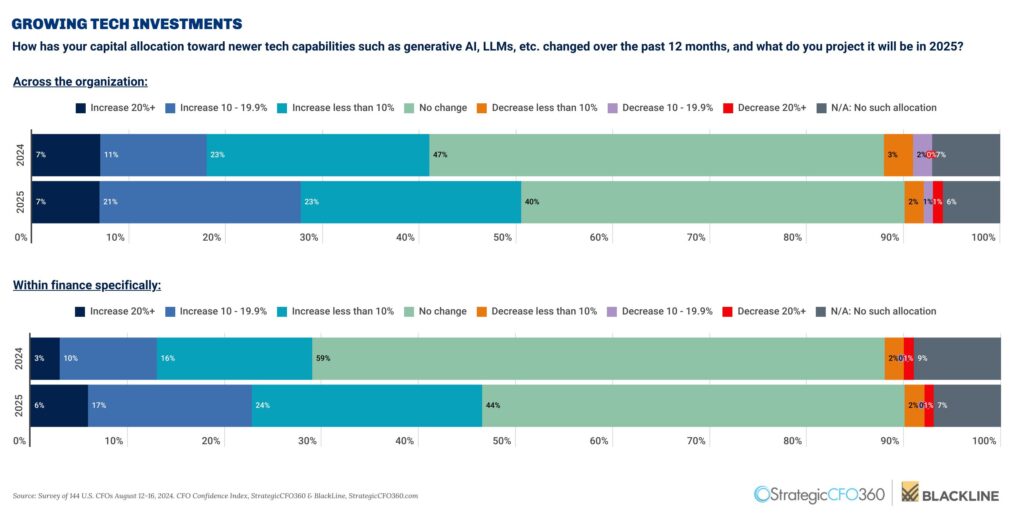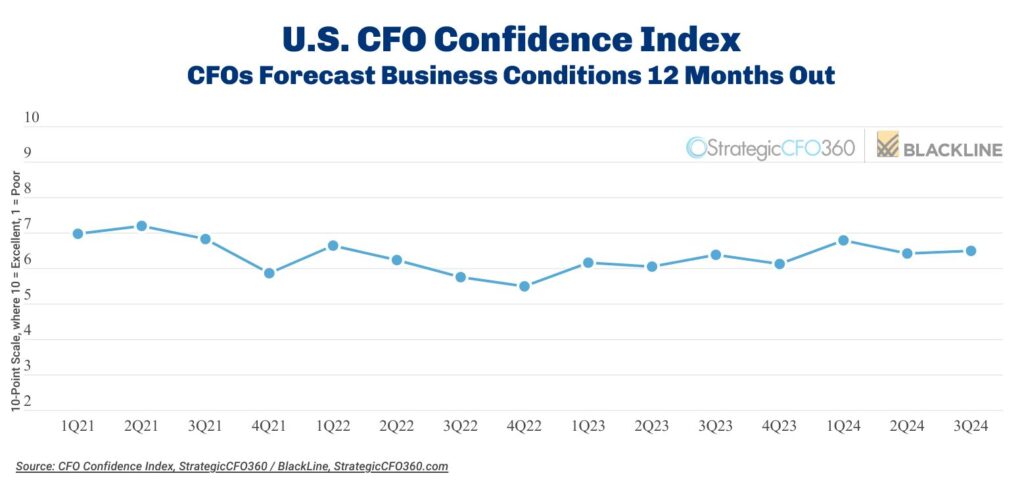How do CFOs incorporate employment conditions and trends into financial planning while excelling at being an employer that attracts high-quality candidates? The trick is to balance the needs of workers and the realities of the company’s financial situation.
Employee retention is of utmost importance in today’s labor market, where the unemployment rate is rising but still manageable at 4.1%. With many workers having optionality in employers, it’s crucial they feel their job meets some level of fulfillment and financial rewards. However, with most companies facing waning pricing power, increasing an employee’s compensation at the drop of a hat is often unfeasible.
Our Katie Kuehner-Hebert interviewed Thomas Luttrell, CFO of MBO Partners, a sourcing platform for independent workers, to gain some guidance on how CFOs can keep employees engaged and expenses in alignment with the company’s financial growth and strategic priorities. Luttrell spent nearly 20 years at Dell Technologies, where he played critical roles in financial management and treasury operations.
Employee retention continues to be one of the most significant business challenges in 2024. How should CFOs incorporate this critical factor into their financial planning strategies for the second half and beyond?
Foremost, employee retention takes effort. While there is undoubtedly a financial component, CFOs need to approach the economic aspects of retention with a holistic understanding that retention is much more than just a financial exercise. Partnering with other business leaders on non-financial HR strategies to prevent turnover is important.
That said, the key financial areas for CFOs to consider are the following:
Stay on top of market compensation rates. CFOs should track market compensation trends. This involves knowing market rates and understanding the nuances across the company’s operating geographies. By doing so, CFOs can anticipate and mitigate potential compensation-based retention issues.
Budget for retention funds. Allocate funds specifically for retention issues that may arise unexpectedly. CFOs should identify patterns of both recurring and infrequent events related to retention issues. This could include turnover and less predictable events like sudden departures of key personnel. While not all retention challenges can be predicted, putting aside identified funds demonstrates foresight and readiness to address them as they arise.
Acknowledge turnover. Recognize that turnover is inevitable, especially in a tight labor market where talented individuals attract the attention of recruiters and competitors. CFOs should factor in the costs associated with turnover, including recruiting expenses and potential productivity losses from replacing skilled workers.
Overall, CFOs must balance maintaining a lean expense base and ensuring adequate resources to retain valuable employees. By integrating these considerations into financial planning processes, CFOs can minimize the negative impact of employee turnover on the company’s operations and financial performance.
Given the volatility and uncertainty in the business climate, how does a CFO manage the financial consequences of trying to meet some employees’ needs for more flexible work arrangements?
When navigating business cycles, organizations must recognize the value of the various functions and the short-term and long-term tradeoffs of growing and contracting the employee base.
Tightening the belt coincides with increased business demands, pushing workers to do more with less. Prioritization becomes vital during those times—distinguishing between critical daily tasks, those that will produce future value and those that are merely nice-to-haves.
Understanding cost structures—what’s fixed, variable and untouchable—helps guide strategic resource allocation.
Flexible work arrangements, such as hiring independent contractors, can be a savvy move. They allow for the efficient protection of critical functions while providing flexibility to bring in specialized talent for projects or cover seasonal needs without the overhead of full-time staff. By juggling these factors smartly, organizations can enhance financial outcomes and meet the evolving personal needs of employees who may not need or want to work full-time or on a fixed schedule.
What are the advantages of tapping the growing population of independent workers?
Independent contractors offer flexibility, bring in diverse skills and can be cost-effective. Take my team, for example: We have a mix of full-time employees and contractors who handle everything from seasonal rushes to temporary gaps due to attrition. This setup can keep an organization nimble, especially in industries like tech, where things change fast.
However, managing contractors can be tricky and complex, especially regarding compliance and classification, like accurately classifying workers as W-2 employees or 1099 contractors. Success hinges on mastering the nuances of this landscape.
Collaborating with independent contractors allows for scaling operations up or down as needed, ensuring agility without overcommitting costs. This adaptive approach allows near-seamless adjustments to changing demands and safeguards against excessive financial burdens.
What’s your strategy for attracting and keeping talent when there’s a shortage of skilled workers? And how do you know if those investments are worth it?
My employee retention strategy prioritizes employee relationships and ensures they feel valued. That requires building solid connections with employees, understanding their needs and communicating transparently.
Feedback fosters trust and demonstrates investment in the employee’s future. Taking calculated risks with proven reliable individuals can also enhance loyalty and commitment. Listening attentively to their concerns and offering support when needed while respecting their autonomy when not further strengthens the relationship. Additionally, staying proactive on compensation shows employees their worth.
Measuring the return on investment for these efforts is challenging, but monitoring attrition rates, especially among key talent, provides insights into retention strategy effectiveness. Ultimately, investing in talent retention is not just about immediate gains but about ensuring the organization’s long-term stability and success.








